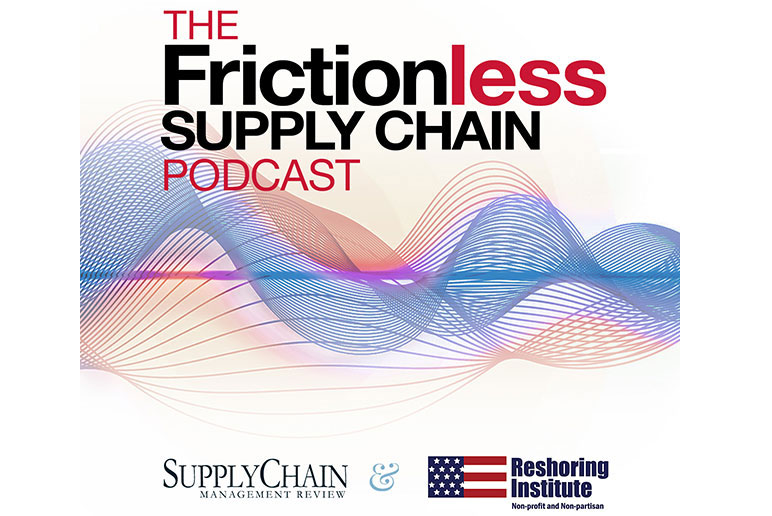Editor’s note: Procurement Pulse is a monthly look at a topic or trend that is impacting the procurement function at organizations of all sizes. If you are interested in future topics, you can see a full list of upcoming features on our Editorial Calendar.
Bringing production and sourcing back to the United States (onshoring/reshoring) or to a country in close proximity (nearshoring) have always been goals for companies that want to gain better control over their supply chains. And while labor rates and availability have long been drivers of offshoring, the pandemic shined a spotlight on the risks of this common practice. Among the more visible issues was the great toilet paper shortage—followed by subsequent outages and disruptions—all of which forced organizations to rethink their supply chain setups.

For procurement leaders, these disruptions can lead to shutdowns of manufacturing and supply chains. As a result, more companies have been thinking about onshoring, reshoring, and nearshoring. They’re also putting more thought into their longer-term strategies and exploring opportunities in countries that may not have previously considered, including places like Malaysia, Guatemala, India, El Salvador and Argentina. Last year, for example, Whirlpool set up a new washing machine factory in Buenos Aires due to the “challenges associated with producing in faraway countries during the COVID-19 pandemic,” Bloomberg reports.
To be clear, the nearshoring/reshoring trend is changing procurement, if no other reason than it is complicating the job with more suppliers in more locations. Quantifying the current onshoring/nearshoring trend, though, isn’t an exact science, mainly because no “official” agency is capturing the data so different groups size up the trend in different ways. MIT Sloan Management Review says companies are constructing new U.S. manufacturing facilities at a pace “not seen in decades.” The Reshoring Initiative reports that 360,000 jobs were either reshored or a result of foreign direct investment (FDI) in 2022 (up 53% over the previous year) and as the year closed out the group was expecting a total of 300,000 jobs to be reshored in 2023.
Hazy numbers aside, there’s little doubt that the reshoring trend is strong right now. “It has become quite obvious that the U.S. manufacturing sector is growing, and that the [related] job environment is positive right now,” says Rosemary Coates, executive director at the Reshoring Institute and author of the Reshoring Guidebook. Based on her own estimates, Coates says around 200,000 jobs are being reshored to the United States annually and that a high degree of domestic companies are “simply expanding without ever going overseas” in the first place. “In some ways, that also counts as reshoring because those organizations aren’t even considering going to China,” she explains.
These shifts bring both rewards and risks, the latter of which aren’t always factored into the final decision-making process. When production takes place closer to home, for example, it shortens supply chains, gives manufacturers a higher degree of control, creates new job opportunities, improves quality control and helps companies keep trade secrets and intellectual property closer to the vest. It can also simplify logistics, reduce transportation costs and allow companies to stamp their products with the coveted “Made in the U.S.A.” label.
Moving production closer to home, or simply away from China, also presents new risks that companies should be thinking about as they lay out their reshoring or nearshoring plans. Coates points to Stanley Black & Decker’s construction and subsequent closure of a factory in Fort Worth, Texas, as an example of what can go wrong when a company decides to “bring back” manufacturing from Mexico to the U.S. Opened in 2022, the factory began producing Craftsman hand tools. Now, due to numerous obstacles, the highly automated factory is shutting down this year.
Because machine tools require a high degree of hand-finishing, for example, producing them in a low-cost labor market like Mexico made sense from the outset. Leaving the task up to automation didn’t work out as planned. “[Stanley] was hoping to address that by adding automation so that their products would be appropriately finished, but they couldn’t make it work,” says Coates. “The quality just wasn’t there, so they essentially had to postpone the production at the Fort Worth plant and take it back to Tijuana—which is where it was—until those issues get straightened out.”
Coates also tells organizations to pay attention to the logistics and transportation networks that will carry their goods from the point of manufacture to the designated distribution points and/or end users. Not all countries have the infrastructure in place to support an uptick in distribution, and that may impede even the best-laid nearshoring, reshoring or onshoring plans.
“In the United States, the infrastructure bill is in place and moving forward,” says Coates. “Hopefully we’ll be able to get our roads, bridges, and ports fixed faster so that we can handle the [expected] onslaught of American manufacturing.”
Having worked with numerous companies that have reshored or nearshored operations recently, Stephen Wiley, advisory principal at Crowe LLP, says there is always the potential for diluted buying power as they spread their dollars across multiple different suppliers. “You may be reducing your risk, but your economies of scale may also go down a bit,” says Wiley, who sees positives in nearshoring and reshoring in today’s business environment.
“While you may lose some of those ‘cost per widget’ benefits, you can offset that by not tying [yourself] to one supplier that can quickly eat away at the cost per widget benefit by having to pay expedited/premium freight from a supplier that isn’t performing,” Wiley adds.
Know the cultural nuances
Bobby Karam, advisory senior manager at Crowe, says companies should also be aware of the cultural nuances in their target nearshoring countries. For example, a producer in India probably won’t give you a price until it’s 100% confident in its ability to do the job well. This applies to other developing countries that don’t want to wind up over-committing and under-delivering, but it can put a kink in an American company’s plans to be “dual-sourced by mid-2024,” Karam points out.
A dose of patience can pay off in these situations, understanding that once a price is shared the new provider will likely meet its commitments and stick to that price. “We haven’t seen a lot of price increases out of India once they get [the contract],” says Karam. “A producer in China, on the other hand, may provide a budget and then add in some price increases along the way.”
Karam also tells companies to pay attention to payment terms, not all of which will be favorable to the customer—at least at first. In India, for example, a maker of steel products will buy all of its raw materials upfront. It will expect a 35% payment upfront and then the remaining balance once its shipped. “That means no more net 60,” says Karam, who has seen some suppliers move to using “net 30 upon shipment” terms over time, once the relationship has been established.
Strive for a single source of truth
According to Vikram Dhawan, SVP, product management F&RS at Dun & Bradstreet, reduced logistics costs, lower customs and transportation fees, and reduced carbon footprints are some of the key drivers of the current onshoring trend. Plus, when suppliers are in closer proximity, companies get more timely and accurate delivery of goods, faster speed to market, and enhanced customer service.
“Nearshoring has gained traction because it can enable greater visibility, greater agility, and ultimately, greater control over supply chains,” says Dhawan, who points to higher labor costs (and a shortage of available labor), stricter government regulations, negative tax impacts, and labor union requirements as some of the risks that companies should be aware of.
“Moving production closer to home, or simply away from China, also presents new risks that companies should be thinking about as they lay out their reshoring or nearshoring plans.”
Don’t overdesign for a single objective
According to a recent Gartner survey, companies that are nearshoring and onshoring are most concerned about inadequate local supply ecosystems, higher operating costs and access to talent—both factory workers and engineers/executives. But, “not all countries have the infrastructure in place to support an uptick in distribution, and that may impede even the best-laid nearshoring, reshoring or onshoring plans,” says Ronak Gohel, research director in the logistics, customer fulfillment and network design team at Gartner.
Gohel advises companies to take a holistic approach to nearshoring, onshoring and reshoring, versus just using it on a one-off basis in response to a specific crisis or opportunity. “Consider how this move supports your objectives holistically not just today, but also tomorrow and the day after,” he says. Factor in what needs to be done right now, he adds, and what can be done to ward off potential disruptions in the future. This proactive approach may lead to both short- and long-term positive results, versus just small, immediate wins.
“When suppliers are in closer proximity, companies get more timely and accurate delivery of goods, faster speed to market, and enhanced customer service,” Gohel says.
SC
MR


More Procurement Pulse
 Explore
Explore
Topics
Procurement & Sourcing News
- Geopolitical readiness in supply chains: Strategic challenges for leaders
- With capacity to spare, logistics real estate demand remains subdued
- Tariffs, taxes and trade: The impact of Trump’s reelection on the supply chain
- How to improve demand forecasts for new product families
- Aggregators sitting on the throne of Africa’s e-commerce supply chains: What lessons can we learn?
- Cross-border transport 2024: Navigating the surge
- More Procurement & Sourcing
Latest Procurement & Sourcing Resources

Subscribe

Supply Chain Management Review delivers the best industry content.

Editors’ Picks




